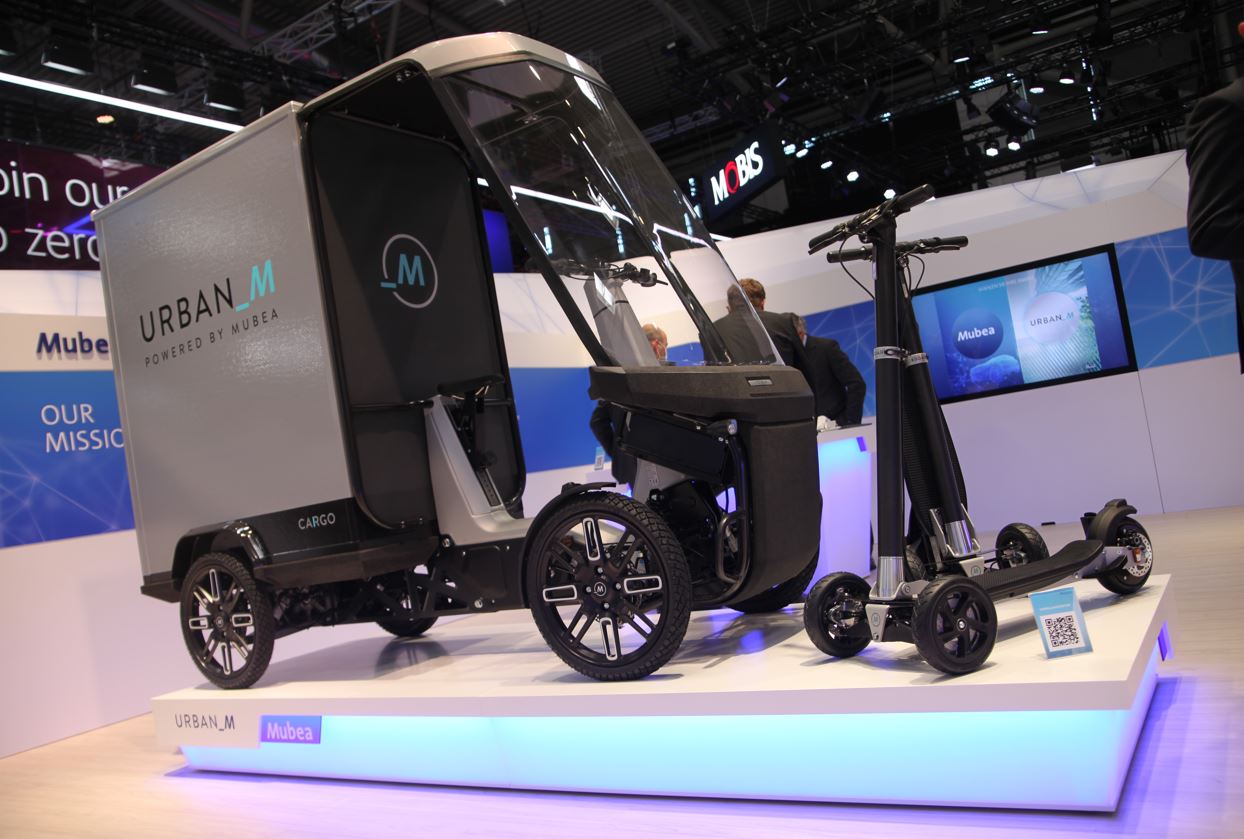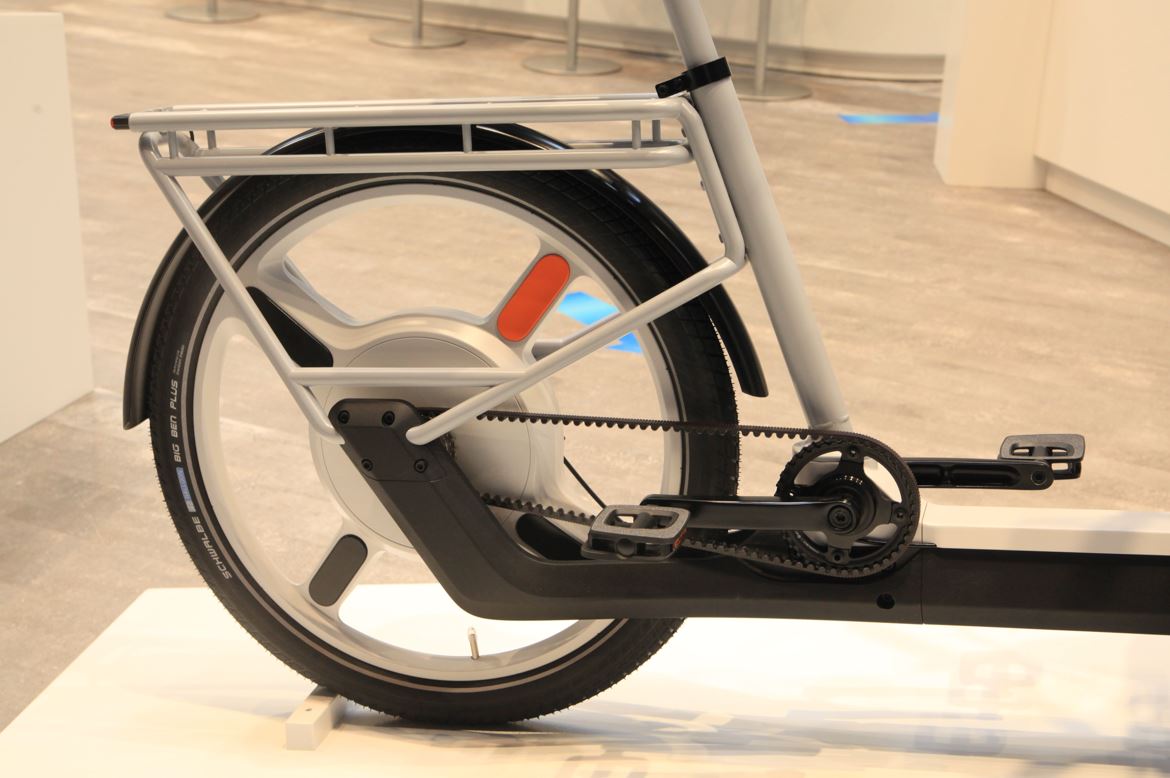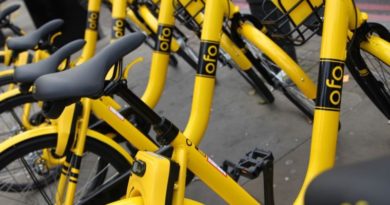What did this year’s trade shows tell us about the direction of the bike business?
In a break from the norms of the past year, CyclingIndustry.News took off during September to visit both the Eurobike show and IAA Mobility, the automotive world’s premier show, now luring in the bike world. Here we offer a summary of the trends spotted that may come to lead the future of the bike business…
Friedrichshafen signs out
Met eventually with some nostalgic sadness most in the industry expressed that Friedrichshafen, as a place, will stay with them for a lifetime. As a venue the story is rather different and the move to Frankfurt has broadly been met with a sigh of relief. Not only will the travel arrangements be infinitely easier for most, but the venue too presents new opportunity.
Speaking to CI.N just prior to the show, director Stefan Reisinger said: “Working closely with our hosts we will transform the trade show concept and then export the ideas further afield. The ceiling of what’s achievable for the exhibitor is now higher. We have four times the size of Friedrichshafen’s space. We also gain more consumer reach in a big city and many exhibitors specifically desire this interaction.”
In the end the organisers were pleasantly surprised with the year’s attendance, that is despite it generally being accepted that in this transitional and Covid complicated year the figures would undoubtedly fall far short of the normal shoulder to shoulder experience.
630 exhibitors were set in widened isles, halls filled from the front but only half full for the most part. Clearly the zeppelin halls needed some padding out, with the dual benefit of giving mask clad visitors breathing room. In the end the organisers reported that 18,770 trade visitors attended the show, while 13,424 consumers came to the two Festival Days.
On the final day of the show a blimp took off from the fields opposite the show halls, hovering over Lake Constance for the next hours advertising Eurobike’s new Munich-based rival, detailed later on these pages.
In 2022, the 30th edition of Eurobike will take place from 13 July to 17 July in Frankfurt.
It’s all about the bike
Reisinger made one promise to the industry when quizzed on competition emerging in Munich and that was that Eurobike, wherever and whenever it takes place, will never be about the car.
This point came well showcased with the final offerings on the main stage, including a presentation with some of the industry’s thought leaders that was attended and spoken at by Anna Cavazzini, an Austrian MEP with a view on European sustainability policy making. For more on that flick to page 28 of this edition.
Alongside the conference schedule Eurobike delivered on the product front, creating a jam-packed Start Ups zone that appeared to be busy at all times, putting on the Eurobike Awards, as well as showcasing dedicated Halls for e-Bike and cargo bike innovators.
So, what did you miss?
Drive system innovations
Purists, look away, it was all about the e-Bike and as such Hall A1 held the sharpest view on what’s incoming in terms of tech and innovation.
German company Schaeffler racked up column inches for its new chain and belt free drive. The Free Drive was created in collaboration with Heinzmann and builds in a small generator installed in the bike’s bottom bracket. The motion of the cranks turning powers this and converts the energy from the rider’s efforts to an electric energy. All of this is managed by CAN communication tech which links up the motor, generator, battery and controls. The best bit? If you are riding at a cadence higher than required to power the system excess energy generated then goes to the battery. Likewise, regenerative braking does the same.
That negates the need for any physical connection to the rear wheel, quite simply you just roll on the gathered momentum from the drive, which powers the 250W rear hub motor electrically. In design terms that obviously throws up new questions, such as what to do with the space saved around the chainstay and rear hub – a nice problem to have for bike designers.
Made closer to home, but still in its prototype stage is Edinburgh designed and built Intra-Drive. This start-up has created a mid-drive, eight-speed gearbox and motor system all in one package. The system is built to last with very low maintenance.
Key to the unique selling point is its heavy-duty high load capacity and sealed construction. That means no cables, nor exposed gears on the bike; what’s more, the gearbox offers a 427% gearing range, with sequential shifting inside the housing.
Meanwhile, the motor is able to deliver 100+ Nm of torque to the rear wheel. The firm’s control algorithm constantly monitors torque, cadence and wheel speed, as well as motor temperature. All of this adds up to a managed shifting experience that optimises gear changes and, best of all, is anticipated in future updates to be capable of automatic shifting.
IAA Mobility
 Is this the beginning of a coming together?
Is this the beginning of a coming together?
Rumours circulated prior to IAA of potential comings together in the very literal form of bike companies and auto firms, the show perhaps providing a platform for the paperwork to complete. At the time of writing, we have yet to see evidence of such things coming to fruition, but it’s safe to say the bike industry’s scouts were in the room during the first two days that CI.N was present.
On the booths themselves the lines were getting increasingly blurred, in particular within the cargo and logistics vehicles space. It has often been said that when automotive brands try to do cycling goods they fall short on some of the basics, overshooting into the realms of the futuristic and in the process mis-understanding the basics of ride handling. For the cargo bike that’s arguably less of an issue than it is on a performance e-MTB. Dare we say it, it appears the auto world is really getting to grips with the product now.
Dr Stefan Cuber, Mubea’s Managing Director of Micromobility presented two concepts across the cargo bike and electric scooter segments at IAA, demonstrating well how the R&D budget of a 2.5 billion-dollar business can very quickly deliver results that are incredibly well thought out.
Mubea’s €10,000 Urban_M cargo bike is already award-winning, despite its skeleton not resembling the bike industry’s typical efforts to date. The firm’s catalogue already depicts use by Hermes and DPD, with the smiling face of a delivery drive beaming out past a full view windshield. Most telling that this stems from the auto world is the car-like front bumper, visible and girder like skeleton and overbuilt wheels.
The chassis is built with fiberglass, combining strength and low weight. This element sits astride a steel central column flanked by double wishbone suspension with damper-strut and stabiliser bars. The wheels are purpose built and carry motorcycle standard tyres.
When it comes to the payload the owner can stack up 335kg, but with a permitted total weight of 450kg. In a clever piece of design, the box volume is designed to be loaded by forklift, perfectly accepting a standard palette size. It is an e-Bike underneath, driven by a BMZ engine and Rohloff SpeedHub 500/14. The battery capacity, delivered via two removable units near the steering column, comes in at 814Wh.
Cuber told CI.N: “Micromobility is a strategic pillar for Mubea and our cargo concept is designed almost to drive like a Mini car; that’s stiff, agile and adaptable with an 100 kilometre range. The next development is one that we think will resonate well with large scale fleet operators and this is to bring forward a battery option made with Iron Phoshate. This is an interesting proposal as from an insurance perspective that removes any element of flammability that traditional batteries cannot surpass. Legally of course this is a cargo bike and so is suited to bike lane use, helping the rider skip traffic.”
 Meet in the middle manufacturing
Meet in the middle manufacturing
While browsing the halls of the automotive segment of IAA it became clear very quickly that many of the multi-billion dollar businesses in the room had acknowledged ‘peak car’; that is so much to say they had diversity in their product ranges that may not have been there even just a few years prior.
For that reason the parts suppliers in the room were likewise showing their wares in the hopes of catching both the attention of the car industry, the bike industry and actually an emerging space in between.
Jens Gráfe of the Hirschvogel Automotive group, on stand to represent sub brand Aximo told CI.N that their exhibition space was built solely for the purpose of showing the bike industry that parts can be made to a more robust automotive standard, likewise offering the automotive world a price point that is perhaps more accessible. Pointing to a forged four-spoked, hub drive wheel of cargo bike on the Aximo booth, Jens offered: “For the cargo bike, to get to a point where we can be challenging the carriage standards in weight terms it is wise to take the component inspiration from the car industry where a more robust product is required. Arguably the bike industry won’t cut it in micromobility without this and we are here to be that enabler and supply the parts in tandem with the brands. We have clients in both sectors.”
Created solely to address the micromobility market, AXIMO combines the expertise and services of the individual ecosystem partners to form a component platform for three- or four-wheeled micromobiles. The platform, which encompasses forged and machined components as well as operating displays and software applications, is a modular system.
“The modules can be used on the customer side to implement different concepts for micro-vehicles in a cost-efficient way,” we were told.
 Cars are getting smaller (mostly)
Cars are getting smaller (mostly)
An inescapable trend on the way to the bike halls was the size of some of the motoring concepts on show. As alluded to in our interview with Bosch CEO Claus Fleischer, there is an element of mathematics in play in the shifting trends of urban mobility. If the city is not getting larger, but the population is, then the primary means of transport, in theory, cannot be disproportionate in size considering the aforementioned boundaries.
As put by the Institute for Public Policy Research in June of this year, on current trajectories we can expect by 2050 to have ten million more cars on the road at any one time and countless more parked; after all on average they are parked for 23 hours of the day. That is, in mathematical terms, a head scratcher and one no amount of electric car sales will solve, unless of course they are a lot smaller.
One such example drawing the attention of crowds at IAA was Microlino’s 3-wheeler, two-person electric car. Apparently approved in regulatory terms, production is to begin in order to fulfil over 24,000 forward orders. It is a vehicle that recognises the constraints of urban mobility and is designed to exploit the fight for space. First of all, it tops out at 56 mph, more than enough for any city. At €12,500 it is reasonably affordable in new car terms too.
Why are we talking about cars in a cycling mag, you may ask? Well, there is an inkling that the car industry has recognised it needs to start competing in a reasonable way for a slice of the city mobility pie before the mathematics overwhelms an industry very fond of ever-larger vehicles. With 230 litres of storage space, it’s reasonably equipped to haul goods and, with parking made a lot easier by its size, could arguably pull on the comfort strings of the almost cargo bike buyer.
Automotive professionalism
A footnote to a week comparing and contrasting trade shows; there is a marked difference in the approach taken to exhibiting between industries.
While strictly our own editor’s assessment of the bike industry’s and purely anecdotal, the difference in approach to trade shows was stark. The automotive expo experience was forensic in that upon visiting the booth staff would meet and greet browsing visitors in seconds. Registration was next, with cards and necessary material exchanged, following by the offer to take a seat or learn more about a product on show. No stone was left unturned and in no instance we experienced did we leave the stand without all of the information we needed.
Once more, it’s a generalisation, but the bike industry booth experience lacks in this professionalism on as many as half of visits. Very often staff will be talking among themselves, letting passing visitors browse without approach.
Much like the retail experience being polished in order to build customer satisfaction and loyalty, the trade show experience – in order to recoup generally high costs – must be similarly precision engineered to benefit both parties.



